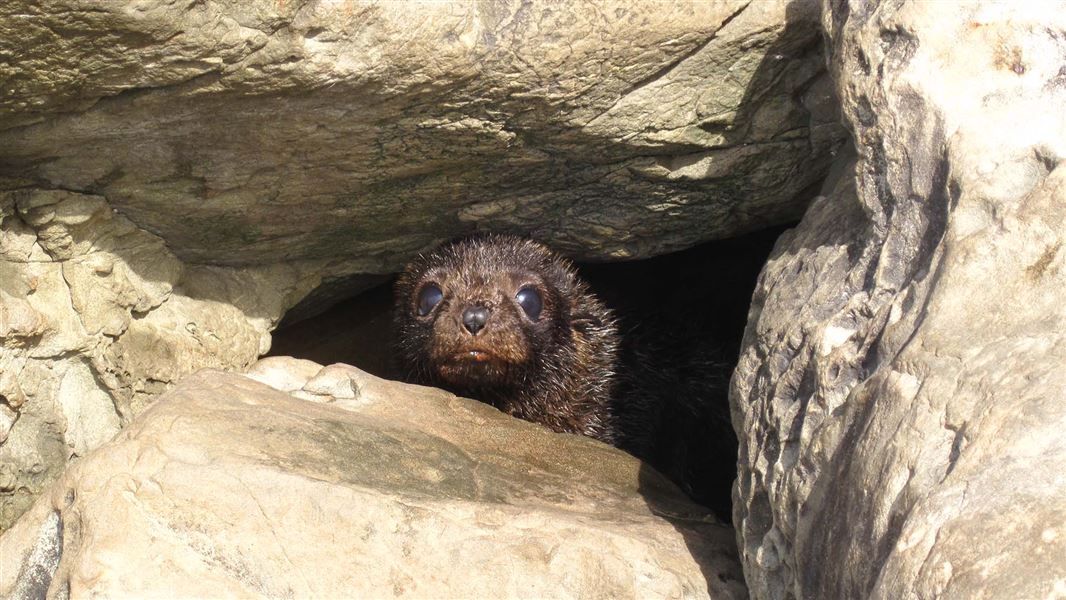Archived content: This media release was accurate on the date of publication.
Date: 25 January 2023
Between 1 July and 22 November 2022, the Department of Conservation (DOC) conducted a public awareness campaign urging people to report sightings of kekeno around Coromandel and the Hauraki Gulf.
The citizen science project and call for sightings followed a high number of dead kekeno observed in the region during the winter of 2021. By receiving more sightings of the seals reported by the public, DOC’s scientists would be able to learn more about the species and understand if the previous winter’s mortalities indicated a trend.
New Zealand’s kekeno population is growing in size and range, and is becoming increasingly visible to New Zealanders.
Marine Science Advisor Laura Boren says DOC received 102 reports of kekeno sightings between July and November.
The sightings were spread across the upper North Island, with 36 in Waikato (including Coromandel), 27 in Auckland, 14 in or around the Hauraki Gulf, and seven each in Northland and Bay of Plenty. Of those, 21 sightings were groups of multiple seals.
Of the sightings, 81 were for live animals and 21 were for dead animals. This was a positive result as there were significantly fewer dead seals reported than over the previous winter and spring (more than 50 animals) .
Images were provided by the public seal spotters for 65 of the sightings of both live and dead kekeno. Most were clear enough for assessment of age class, and these helped DOC staff confirm that sightings included kekeno of all age classes (pup, juvenile, sub-adult and adult), similar to what was observed the previous year.
The other sightings did not include images but still proved useful for the project.
“The decision to extend the project into summer will deliver more valuable data on one of our most visible and interesting marine mammal species,” Laura says.
“In summer, more people are out enjoying the coasts of New Zealand and the ocean around us, so that’s more eyes helping us identify seals and provide us with sightings.”
In addition, the extension into summer allows us to look for kekeno across a very important time in their life history as summer is breeding season.
The project area has been expanded to cover areas north of Kawhia, on Waikato’s west coast, and Whakatane on the east coast.
Otago University Wildlife Management Masters student Nicola Roos is also contributing to the project, carrying out field work on DOC vessels.
“Key areas of interest include Auckland, the Hauraki Gulf, and the Coromandel Peninsula. We will be gathering sightings data of any fur seals spotted within our study area,” Nicola says.
“This data will be mapped to create an estimate of their distribution and determine key sites where kekeno like to hang out.”
Nicola’s field work will also assess locations for potential release sites for rehabbed seals through DOC's relationship with Auckland Zoo.
Auckland Zoo has a permit to rehab and release fur seals, but at the moment doesn’t use it to its full potential as DOC needs to identify release sites that would improve the chance of successful rehabs. The project work will help DOC to identify potential release sites and better plan for this activity.
Identifying breeding areas or locations where multiple sub-adult seals haul out reliably will enable us to identify potential release sites.
Laura says DOC welcomes reports of sightings of all seals, either live or dead, from around the upper North Island.
Information and photos of all dead seals found means local DOC staff can assess whether the specimen meets the criteria for necropsy.
The key factor is freshness – the fresher the specimen, the greater chance of determining the cause of death.
“From those necropsies, we’ll be able to gather important information on the species, why some of the individuals have died, and what we can do going forward.
“For this reason, it’s important to report as quickly as possible.”
Regardless, all reports, images and information collected will help build understanding of the kekeno population.
Report kekeno sightings
In reporting kekeno sightings, and providing photographs, people should take photos of the whole animal from several angles. For deceased animals, include one photo looking straight down from above, with something for scale.
Note the date, location and if the animal is tagged.
Send this information to kekeno@doc.govt.nz.
Contact
For media enquiries contact:
Email: media@doc.govt.nz
